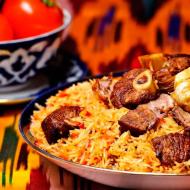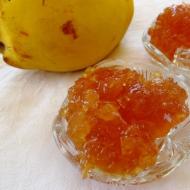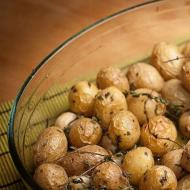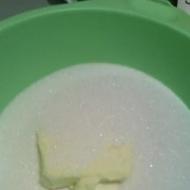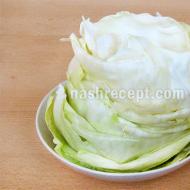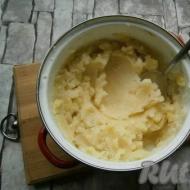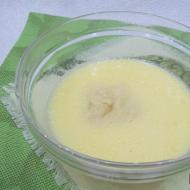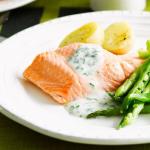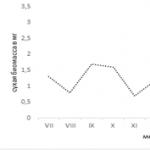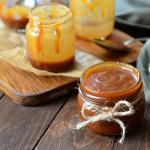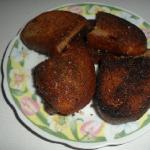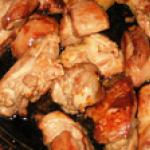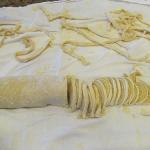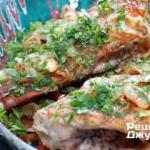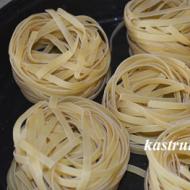
Characteristics of the profession. Cook. Characteristics of the profession Vocational training courses
When we go to catering establishments, do we often think about who prepares our food? Of course, everyone knows that the chef must turn food into dishes. But not all chefs are the same; they can differ greatly in skill level. Beginners will not be trusted to work on complex dishes, and high-quality chefs will not work in cheap catering establishments with an unpretentious menu. Today we will look at the main chef categories and how they differ.
Let us immediately note that there are five categories in total, but they start from the second - second, third, fourth, fifth and sixth. The higher the number, the more professionalism, more experience, responsibility and higher potential salary. A detailed description of each of them can be found in the Unified Tariff and Qualification Directory (UTKS).
Second category. This chef qualification is given to inexperienced personnel who have just graduated from a vocational school and do not have much experience. Newcomers are sent to auxiliary work related to cooking. These include cleaning vegetables and fruits using knives and special devices, food processing, separating low-quality berries, nuts, fruits and vegetables from high-quality ones, washing and slicing. He is also trusted with defrosting and gutting fish, meat or poultry and processing offal.

The main knowledge that employees in this category must have is the correct handling and storage of products; they must know the requirements for food processing and shelf life.
Third category. Third-class chefs are already allowed to cook, which uses the simplest recipes and processing. For example, he cooks porridge or vegetable dishes, or prepares simple dishes from eggs, pasta or cereals. In addition, he is entrusted with basic frying - cutlets, vegetables, pancakes. Another acceptable duty for third-class cooks is preparing sandwiches and dishes from ready-made semi-finished products, concentrates or canned food. An employee can be involved in serving, distributing and arranging menu items.
Fourth category. Such workers are much more trained; they have the right to prepare food that is of average complexity. Thus, a chef with the fourth category can prepare salads from vegetables, meat or poultry, jellied meat, soups and main courses, desserts and pastries. A mandatory requirement is knowledge of recipes, technological maps, cooking technologies, quality and safety standards. The cook must know everything about the influence of acidity, salinity and water hardness on the quality and cooking time of food products.

Fifth category. Starting from this category of catering workers, high qualifications begin. A fifth-class cook can prepare dishes with complex recipes, compositions and heat treatments - jellied fish and meat, clear and dietary soups, pickles, steamed products, sauces, dressings and complex dough products. He is entrusted with drawing up a menu and a list of products for purchases, as well as maintaining reports. It is implied that a Level 5 Chef's skill allows him to have extensive culinary knowledge and experience. Starting from this rank, the employee is responsible for products and raw materials.
Sixth category. The last category of cooks is the sixth category. Such workers are the most experienced and qualified. The sixth category cannot be obtained without special education. His responsibilities include preparing dishes of the highest complexity, including molecular gastronomy. A chef of such a high level must have an unmistakable understanding of the peculiarities of the cuisines of different countries and have an excellent understanding of the dietary menu.

It is worth noting that the ranks of a chef are not something defining a chef’s career. It may well be that a third-rate chef works in an expensive gourmet restaurant. There he gains experience and can get a “promotion” without leaving the stove.
This job description has been automatically translated. Please note that automatic translation is not 100% accurate, so there may be minor translation errors in the text.
Preface to the job description
0.1. The document comes into force from the moment of approval.
0.2. Document developer: _ _ _ _ _ _ _ _ _ _ _ _ _ _ _ _ _ _ _ _ _ _ _.
0.3. The document has been approved: _ _ _ _ _ _ _ _ _ _ _ _ _ _ _ _ _ _ _ _ _ _ _ _.
0.4. Periodic verification of this document is carried out at intervals not exceeding 3 years.
1. General Provisions
1.1. The position "Cook 3rd category" belongs to the category "Workers".
1.2. Qualification requirements: complete or basic general secondary education. Vocational education or obtaining a profession directly on the job. No work experience requirements.
1.3. Knows and applies in practice:
- recipe, cooking technology, quality requirements, distribution (packing) rules, terms and conditions of storage of dishes;
- types, properties, culinary purposes and peculiarities of cultivation of potatoes, vegetables, mushrooms, cereals, pasta and legumes, cheese, eggs, semi-finished products from cutlet mass, dough, canned food, concentrates and other products, signs and organoleptic methods for determining their quality;
- techniques, methods and sequence of heat treatment of products;
- rules for operating relevant types of technological equipment, production equipment, tools, weighing instruments, utensils, their purpose and use in the technological process;
- operating rules for public catering establishments;
- sanitary rules for public catering establishments;
- rules and regulations of labor protection, fire protection, industrial sanitation and personal hygiene.
1.4. A cook of the 3rd category is appointed to the position and dismissed from the position by order of the organization (enterprise/institution).
1.5. A 3rd grade cook reports directly to _ _ _ _ _ _ _ _ _ _ .
1.6. A 3rd grade cook supervises the work of _ _ _ _ _ _ _ _ _ _ .
1.7. A cook of the 3rd category during his absence is replaced by a person appointed in accordance with the established procedure, who acquires the appropriate rights and is responsible for the proper performance of the duties assigned to him.
2. Characteristics of work, tasks and job responsibilities
2.1. Prepares dishes and culinary products that require simple culinary processing: boils, fries, bakes and bakes products.
2.2. Forms and breads semi-finished products.
2.3. Performs auxiliary work with the preparation of dishes and culinary products.
2.4. Conducts primary culinary processing of raw materials.
2.5. Produces dishes from concentrates.
2.6. Portioning (assembling), distributing dishes of mass demand.
2.7. Knows, understands and applies current regulations relating to his activities.
2.8. Knows and complies with the requirements of regulations on labor protection and environmental protection, complies with the norms, methods and techniques for the safe performance of work.
3. Rights
3.1. A 3rd grade cook has the right to take action to prevent and eliminate cases of any violations or inconsistencies.
3.2. A 3rd category cook has the right to receive all social guarantees provided for by law.
3.3. A 3rd category cook has the right to demand assistance in the performance of his official duties and the exercise of his rights.
3.4. A 3rd category cook has the right to demand the creation of organizational and technical conditions necessary for the performance of official duties and the provision of the necessary equipment and inventory.
3.5. A 3rd category cook has the right to familiarize himself with draft documents relating to his activities.
3.6. A 3rd category cook has the right to request and receive documents, materials and information necessary to fulfill his job duties and management orders.
3.7. A 3rd category cook has the right to improve his professional qualifications.
3.8. A 3rd category cook has the right to report all violations and inconsistencies identified in the course of his activities and make proposals for their elimination.
3.9. A 3rd category cook has the right to familiarize himself with documents defining the rights and responsibilities of the position held, and criteria for assessing the quality of performance of job duties.
4. Responsibility
4.1. A 3rd category cook is responsible for failure to fulfill or untimely fulfillment of the duties assigned by this job description and (or) failure to use the granted rights.
4.2. A 3rd category cook is responsible for failure to comply with internal labor regulations, labor protection, safety regulations, industrial sanitation and fire protection.
4.3. A 3rd category cook is responsible for disclosing information about an organization (enterprise/institution) that is a trade secret.
4.4. A 3rd category cook is responsible for failure to comply or improper fulfillment of the requirements of internal regulatory documents of the organization (enterprise/institution) and legal orders of management.
4.5. A 3rd category cook is responsible for offenses committed in the course of his activities, within the limits established by the current administrative, criminal and civil legislation.
4.6. A 3rd category cook is responsible for causing material damage to an organization (enterprise/institution) within the limits established by current administrative, criminal and civil legislation.
4.7. A 3rd category cook is responsible for the unlawful use of granted official powers, as well as their use for personal purposes.
5. Examples of work
5.1. Cooking potatoes and other vegetables, legumes, pasta, cereals; frying potatoes, vegetables, cutlet mass products; baking vegetable and cereal products; forming dough products, frying them and baking them; washing, peeling, cutting vegetables and herbs; defrosting meat and fish; cutting game, poultry, fish.
Characteristics of the work.
Preparation of dishes and culinary products requiring simple culinary processing. Cooking potatoes and other vegetables, cereals, legumes, pasta, eggs. Frying potatoes, vegetables, cutlet products (vegetable, fish, meat), pancakes, pancakes, pancakes. Baking vegetables and cereals. Straining, rubbing, kneading, chopping, molding, stuffing, stuffing products. Preparation of sandwiches, semi-finished products, canned food and concentrates. Portioning (packing), distribution of dishes of mass demand.What you should know:
- recipes, basics of cooking technology, quality requirements, rules for distribution (assemblies), terms and conditions of storage of dishes
- types, properties and culinary purposes of potatoes, vegetables, mushrooms, cereals, pasta and legumes, cottage cheese, eggs, semi-finished cutlet mass products, dough, canned food, concentrates and other products, signs and organoleptic methods for determining their good quality, rules, techniques and sequence performing operations to prepare them for heat treatment
- purpose, rules for using the technological equipment used, production equipment, tools, weighing instruments, utensils and rules for caring for them.
UNIFIED TARIFF - QUALIFICATION DIRECTORY
JOBS AND PROFESSIONS OF WORKERS
ISSUE 55
Cook
2nd category
Characteristics of the work. Performing auxiliary work in the production of dishes and culinary products. Peeling, finishing potatoes, fruits, vegetables, fruits, berries before or after washing them using knives and other devices. Sorting of greens, fruits, vegetables, berries, potatoes. Removal of defective specimens for foreign impurities. Washing vegetables, rinsing them after cleaning, finishing. Slicing bread, potatoes, vegetables, herbs. Defrosting fish, meat, poultry. Gutting of fish, poultry, game. Cutting herring, sprat. Processing of by-products, etc.
Must know: rules for primary culinary processing of raw materials and products and requirements for the quality of semi-finished products from them; rules for slicing bread; terms and conditions of storage of peeled vegetables; design, rules for adjustment and operation of bread slicing machines of different brands; safe working practices when slicing bread manually and by machine.
Cook
3rd category
Characteristics of the work. Preparation of dishes and culinary products requiring simple culinary processing. Cooking potatoes and other vegetables, cereals, legumes, pasta, eggs. Frying potatoes, vegetables, cutlet products (vegetable, fish, meat), pancakes, pancakes, pancakes. Baking vegetables and cereals. Straining, rubbing, kneading, chopping, molding, stuffing, stuffing products. Preparation of sandwiches, semi-finished products, canned food and concentrates. Portioning (packing), distribution of dishes of mass demand.
Must know: recipes, cooking technology, quality requirements, rules for distribution (assemblies), terms and conditions of storage of dishes; types, properties and culinary purposes of potatoes, vegetables, mushrooms, cereals, pasta and legumes, cottage cheese, eggs, semi-finished cutlet mass products, dough, canned food, concentrates and other products, signs and organoleptic methods for determining their good quality; rules, techniques and sequence of operations to prepare them for heat treatment; purpose, rules for using technological equipment, production equipment, tools, weighing instruments, utensils and rules for caring for them.
Cook
4th category
Characteristics of the work. Preparation of dishes and culinary products that require culinary processing of medium complexity: various salads from fresh, boiled and stewed vegetables, with meat, fish; vinaigrettes; marinated fish; jelly; natural herring and with garnish. Cooking broths, soups. Preparation of main courses from vegetables, fish and seafood, meat and meat products, poultry and rabbit in boiled, stewed, fried, baked form; sauces, various types of sautés; hot and cold drinks; sweet dishes, flour products: dumplings, dumplings, pies, kulebyak, pies, homemade noodles, cheesecakes, etc.
Must know: recipes, technology for preparing dishes and culinary products that require culinary processing of medium complexity; requirements for their quality, timing, storage and distribution conditions; culinary purposes of fish, seafood, meat, meat products, poultry and rabbit, signs and organoleptic methods for determining their good quality; the influence of acids, salts and water hardness on the duration of heat treatment of products; design and operating rules of technological equipment.
Resolution The State Labor Committee of the USSR and the Secretariat of the All-Union Central Council of Trade Unions dated January 7, 1988 N 4/1-16 amended the tariff and qualification characteristics of the profession "_ 20. Cook" of this Handbook.
Cook
5th category
Characteristics of the work. Preparation of dishes and culinary products that require complex culinary processing: jellied fish, aspic of meat products, assorted fish, meat, etc.; soups in clear broths from fish, meat, poultry, game birds; dietary soups based on broths, vegetable and fruit decoctions; pickles; dishes from boiled, poached or stewed fish with various sauces, from stewed, fried natural meat, with various side dishes, poultry stuffed with apples or potatoes, etc. Preparation of steamed natural and stuffed omelettes, egg porridges, various sauces and dressings, products from shortbread, puff pastry: vol-au-vents, croutons, tartlets. Drawing up menus, requests for semi-finished products and products, product reports.
Must know: recipes, cooking technology, requirements for quality, timing, storage conditions, portioning, design and serving of dishes and culinary products that require complex culinary processing; basics of rational nutrition; types, properties and methods of processing raw materials and semi-finished products used for preparing complex dishes and culinary products; ways to reduce losses and preserve the nutritional value of food products during their thermal processing (use of various methods of heating or heating, creation of a certain environment - sour, salty, etc.); aromatic substances and methods of their use to improve the taste of culinary products; current collections of recipes, technological instructions and rules for their use; rules for drawing up menus, product requests, accounting and preparation of product reports. Secondary specialized education required.
Resolution The State Labor Committee of the USSR and the Secretariat of the All-Union Central Council of Trade Unions dated January 7, 1988 N 4/1-16 amended the tariff and qualification characteristics of the profession "_ 21. Cook" of this Handbook.
(text of the tariff and qualification characteristics in the previous edition)
Cook
6th category
Characteristics of the work. Preparation of dishes and culinary products that require particularly complex culinary processing: jellied or stuffed pig; liver pate; fish dumplings in jelly; jellied fish, stuffed; meat, offal, veal meatballs in vegetarian jelly; meat cheese; broths with profiteroles, quenelles, meatballs; fish soup from various fish species; botvinya, vegetable okroshka, meat, with game; dishes of fish and meat baked in separate portions in various sauces; meat puree, soufflé, puddings, rolls, cutlets, natural or stuffed with chicken or game; egg-butter sauces, oil mixtures, mayonnaise sauces with various flavoring and aromatic additives; gelled creams, mousses, sambucas, sweet sauces, fruits and berries in syrup, with whipped cream and sugar; airy pies, soufflé, dessert ice cream, parfait, hot drinks, etc. Portioning, presentation and distribution of custom-made and signature dishes, dishes of national and foreign cuisines; products and ready-made dishes for exhibitions and sales.
Must know: recipes, technology for preparing all types of dishes and culinary products; features of preparing national, signature dishes and foreign cuisines; characteristics of diets; dishes and products prohibited for certain diets; changes that occur during heat treatment with proteins, fats, carbohydrates, vitamins, coloring and other substances contained in food products; rules for portioning, design and serving of custom, specialty and dietary dishes; rules for drawing up holiday and banquet menus, menus for serving individual groups of people eating, etc.; ways to eliminate defects in finished products. Secondary specialized education required.
I CONFIRM:
________________________
[Job title]
________________________
[Name of company]
________________/[F. AND ABOUT.]/
"____" ____________ 20__
JOB DESCRIPTION
Cook 3rd category
1. General Provisions
1.1. This defines the functional duties, rights and responsibilities of a 3rd category cook [Name of the organization in (hereinafter referred to as the Company).
1.2. A 3rd category cook is appointed and dismissed in accordance with the procedure established by current labor legislation by order of the head of the Company.
1.3. A 3rd category cook belongs to the category of workers and reports directly to [name of the position of the immediate supervisor in the Company.
1.4. A person with appropriate training and work experience in the specialty of at least 1 year is appointed to the position of 3rd category cook.
1.5. In practical activities, a 3rd category cook must be guided by:
- local acts and organizational and administrative documents of the Company; internal labor regulations; rules of labor protection and ensuring industrial sanitation and fire protection; instructions, orders, decisions and instructions from the immediate supervisor; this job description.
1.6. A 3rd category cook must know:
- recipes, basics of cooking technology, quality requirements, rules for distribution (assemblies), terms and conditions of storage of dishes; types, properties and culinary purposes of potatoes, vegetables, mushrooms, cereals, pasta and legumes, cottage cheese, eggs, semi-finished cutlet mass products, dough, canned food, concentrates and other products, signs and organoleptic methods for determining their good quality, rules, techniques and sequence performing operations to prepare them for heat treatment; purpose, rules for using the technological equipment used, production equipment, tools, weighing instruments, utensils and rules for caring for them.
1.7. During the period of temporary absence of a 3rd category cook, his duties are assigned to [deputy position title].
2. Functional responsibilities
A 3rd category cook performs the following labor functions:
2.1. Preparation of dishes and culinary products requiring simple culinary processing.
2.2. Cooking potatoes and other vegetables, cereals, legumes, pasta, eggs.
2.3. Frying potatoes, vegetables, cutlet products (vegetable, fish, meat), pancakes, pancakes, pancakes.
2.4. Baking vegetables and cereals.
2.5. Straining, rubbing, kneading, chopping, molding, stuffing, stuffing products.
2.6. Preparation of sandwiches, semi-finished products, canned food and concentrates.
2.7. Portioning (packing), distribution of dishes of mass demand.
In case of official necessity, a cook of the 3rd category may be involved in performing his duties overtime, in the manner prescribed by law.
A 3rd category cook has the right:
3.1. Get acquainted with the draft decisions of the enterprise management concerning its activities.
3.2. Submit proposals for improvement of work related to the responsibilities provided for by this job description for management's consideration.
3.3. Inform your immediate supervisor about all shortcomings in the production activities of the enterprise (its structural divisions) identified during the performance of your official duties and make proposals for their elimination.
3.4. Request personally or on behalf of the immediate supervisor from heads of departments of the enterprise and specialists information and documents necessary to perform their job duties.
3.5. Involve specialists from all (individual) structural divisions of the Company in solving the tasks assigned to him (if this is provided for by the regulations on structural divisions, if not, with the permission of the head of the Company).
3.6. Require the management of the enterprise to provide assistance in the performance of their official duties and rights.
4. Responsibility and performance evaluation
4.1. A 3rd category cook bears administrative, disciplinary and material (and in some cases provided for by the legislation of the Republic of Kazakhstan, criminal) responsibility for:
4.1.1. Failure to carry out or improperly carry out official instructions from the immediate supervisor.
4.1.2. Failure to perform or improper performance of one's job functions and assigned tasks.
4.1.3. Illegal use of granted official powers, as well as their use for personal purposes.
4.1.4. Inaccurate information about the status of the work assigned to him.
4.1.5. Failure to take measures to suppress identified violations of safety regulations, fire safety and other rules that pose a threat to the activities of the enterprise and its employees.
4.1.6. Failure to ensure compliance with labor discipline.
4.2. The assessment of the work of a 3rd category cook is carried out:
4.2.1. By the immediate supervisor - regularly, in the course of the employee’s daily performance of his labor functions.
4.2.2. The certification commission of the enterprise - periodically, but at least once every two years, based on documented results of work for the evaluation period.
4.3. The main criterion for assessing the work of a 3rd category cook is the quality, completeness and timeliness of his performance of the tasks provided for in these instructions.
5. Working conditions
5.1. The work schedule of a 3rd category cook is determined in accordance with the internal labor regulations established by the Company.
5.2. Due to production needs, a 3rd category cook is required to go on business trips (including local ones).
I have read the instructions on ___________/___________/“____” _______ 20__.

